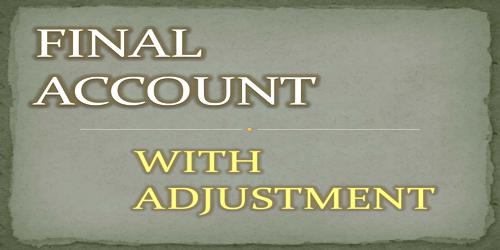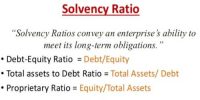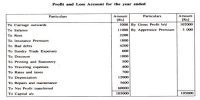Final Account Adjustments
When a person starts a business he requirements to know the financial performance of his business. A suitable and generally established technique of knowing this is to determine the profit or loss at yearly intervals and the financial situation of the business on a given date. He can determine these by preparing the Final Accounts, which is prepared on the basis of the Trial Balance. The preparation of Final Accounts is the final step in the accounting cycle and that is why they are called Final Accounts.
Final Accounts include the preparation of –
(i) Trading and Profit and Loss Account ; and
(ii) Balance sheet.
Final accounts are the means of conveying the prosperity and financial situation to management, owners, and interested outsiders of the business. Final accounts have to be arranged every year, to make a continuous appraisal of the business for a fulfilled period. It must be set aside in mind that expenses and incomes for the full accounting period are to be taken into account.
Example:
Suppose, the firm closes its books on 31st March and rent for the month of March has not been paid, this expense (rent) has been incurred and yet to be paid. Therefore, it would be proper to include the rent for the month (March) along with the rent of the year to know the true profit. In a firm there will be a number of items, both expenses and incomes, which have to be adjusted. If such items are not adjusted, the final accounts will not reveal the true and fair picture of the business performance. All such items which need to be brought into books of account at the time of preparing final accounts are called “adjustments”. Journal entries passed to effect the required adjustments are known as adjusting entries.
Adjustments
Some important and common items, which need to be adjusted at the time of preparing the final accounts are discussed below.
- Closing stock
- Outstanding expenses
- Prepaid Expenses
- Accrued incomes
- Incomes received in advance
- Interest on capital
- Interest on drawings
- Interest on loan
- Interest on investment
- Depreciation
- Bad Debts
- Provision for bad and doubtful debts
- Provision for discount on debtors
- Provision for discount on creditors.
Remember, all adjustments are given outside the trial balance.
















